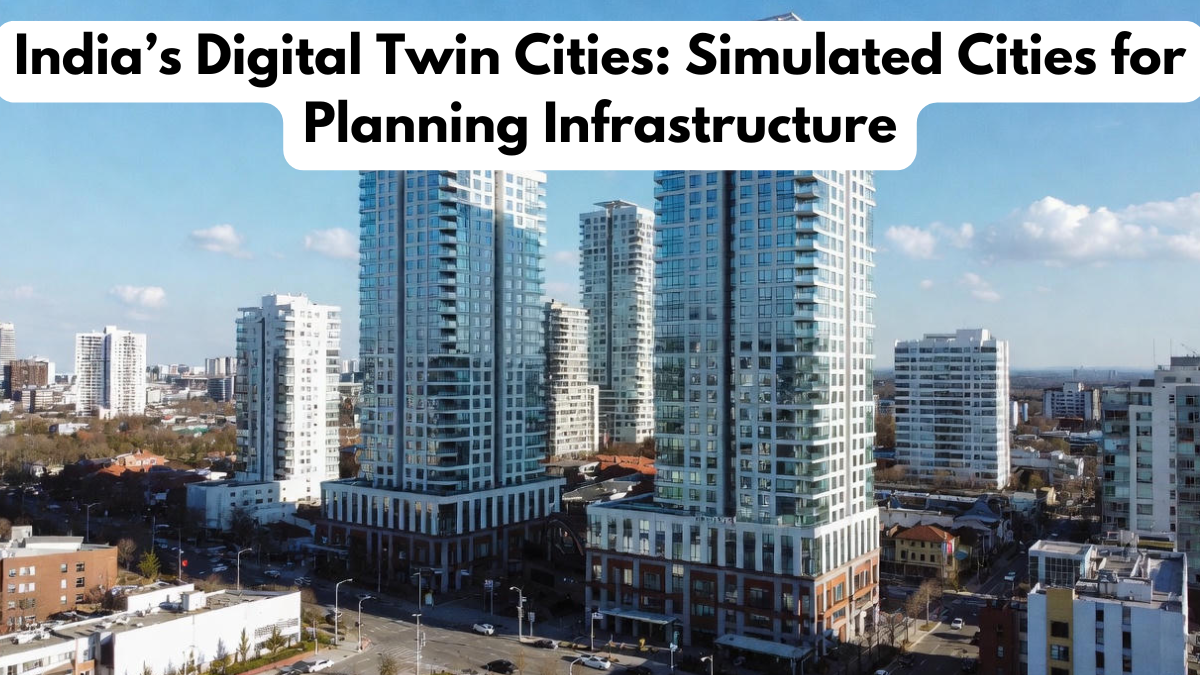The rise of digital twin cities india marks a new milestone in the nation’s journey toward advanced urban development. A digital twin city is a virtual replica of a real city, built using data, sensors, and 3D simulation technology. This powerful tool enables governments and planners to test ideas, forecast challenges, and simulate infrastructure outcomes before applying them in real environments. As India accelerates its modernization plans, this shift is playing a major role in expanding the future of smart city planning.
With rapid population growth, traffic congestion, environmental concerns, and resource management challenges increasing, Indian cities need highly effective planning systems. The introduction of digital twin technology provides a new way to visualize the future, optimize utilities, and design resilient infrastructure. The growing demand for digital twin cities india shows how strongly technology is shaping the next phase of Indian urban development.

Why India Needs Digital Twin City Models
The complexity of managing major Indian cities makes digital replication essential. Traditional planning models often fail to consider unpredictable factors such as population surges, climate change, or seasonal migration. Digital twin models offer real-time insights, helping officials simulate scenarios before investing significantly in construction. This is why smart city planning is increasingly dependent on advanced modeling tools.
A major appeal of digital twin cities india is the precision and speed with which planners can analyze various outcomes. They can visualize traffic flow, drainage systems, green zones, and emergency response routes. These insights allow authorities to avoid costly mistakes, build safer environments, and improve daily living conditions for citizens.
Key Features of India’s Digital Twin City Ecosystem
Digital twin technology brings together a powerful combination of data, AI, sensors, and geospatial mapping. This integration makes smart city planning more accurate and responsive. Cities like Bengaluru, Delhi, Surat, and Pune are already testing digital twin models to improve transportation systems and infrastructure layouts.
Below is a table outlining the major components of digital twin cities india:
| Component | Description | Role in Smart City Planning |
|---|---|---|
| Real-Time Data Sensors | Collect information on traffic, climate, and utilities | Enables accurate city simulations |
| 3D City Models | High-resolution virtual city replicas | Helps visualize future developments |
| Predictive Analytics | AI-based forecasting tools | Supports better urban decision-making |
| Simulation Engines | Tools for testing infrastructure outcomes | Reduces risk of project failure |
| Citizen Interaction Platforms | Digital portals for public feedback | Improves community-driven planning |
These components collectively strengthen the foundation of modern smart city planning, making urban transformation more strategic and citizen-friendly.
How Digital Twin Cities Improve Urban Living
The introduction of digital twin cities india comes with several advantages for both planners and citizens. By simulating road patterns, public utility requirements, and emergency scenarios, government agencies can improve city layouts with remarkable precision. For instance, predicting how monsoon rainfall could affect drainage networks helps prevent flooding in advance.
Digital twins also support long-term sustainability goals. By evaluating energy usage patterns, pollution levels, and transportation systems, planners can design eco-friendly solutions. For citizens, this means improved traffic flow, better air quality, and more reliable public services. This use of smart city planning ensures that cities grow intelligently without compromising environmental priorities.
Challenges in Implementing Digital Twin Cities
While the future looks promising, building digital twin cities india requires significant investment in data infrastructure and skilled technology professionals. Many cities still lack the sensor networks needed to capture real-time data. Additionally, integrating systems across different municipal departments remains a challenge.
However, government initiatives and private sector partnerships are actively addressing these hurdles. With the continuous expansion of digital infrastructure across India, the role of smart city planning will only grow stronger. As technology evolves and data becomes more accessible, digital twins will become a core part of every major Indian city’s development strategy.
Conclusion
The concept of digital twin cities india offers a revolutionary approach to shaping India’s urban future. These simulated environments empower planners to create safer, cleaner, and more efficient cities using predictive analytics and real-time data. Supported by advanced smart city planning, digital twins are ushering in a new era of strategic development. As India continues its rapid modernization, digital twin cities will play a crucial role in improving infrastructure, enhancing sustainability, and ensuring better living standards for millions of citizens.
FAQs
What is a digital twin city?
A digital twin city is a virtual model of a real city created to simulate and analyze urban development before applying changes in the real world.
How does digital twin technology support smart city planning?
It allows planners to test ideas, study data, and forecast future outcomes, making smart city planning more accurate and efficient.
Are Indian cities using digital twin models already?
Yes, several cities are adopting early versions of digital twin cities india to improve traffic, drainage, and infrastructure design.
What benefits do citizens get from digital twin cities?
Citizens can experience better traffic management, improved sustainability, and more reliable public services.
What is the biggest challenge in creating digital twin cities?
The biggest challenge is building robust sensor networks and data systems required for accurate digital modeling.
Click here to learn more